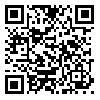Volume 15, Issue 2 (9-2017)
sjsph 2017, 15(2): 171-184 |
Back to browse issues page
Download citation:
BibTeX | RIS | EndNote | Medlars | ProCite | Reference Manager | RefWorks
Send citation to:



BibTeX | RIS | EndNote | Medlars | ProCite | Reference Manager | RefWorks
Send citation to:
Farahmand Z, Shojaeizadeh D, Tol A, Azam K. The Impact of an Educational Program Based on the Health Belief Model on Diabetic Foot Care in Type-2 Diabetic Patients. sjsph 2017; 15 (2) :171-184
URL: http://sjsph.tums.ac.ir/article-1-5528-en.html
URL: http://sjsph.tums.ac.ir/article-1-5528-en.html
1- MSc. Student, Department of Health Education and Health Promotion, School of Public Health, Tehran University of Medical Sciences, Tehran, Iran
2- Ph.D. Professor, Department of Health Education and Health Promotion, School of Public Health, Tehran University of Medical Sciences, Tehran, Iran ,shojaei@sina.tums.ac.ir
3- Ph.D. Department of Health Education and Health Promotion, School of Public Health, Tehran University of Medical Sciences, Tehran, Iran
4- Ph.D. Associate Professor, Department of Epidemiology and Biostatistics, School of Public Health, Tehran University of Medical Sciences, Tehran, Iran
2- Ph.D. Professor, Department of Health Education and Health Promotion, School of Public Health, Tehran University of Medical Sciences, Tehran, Iran ,
3- Ph.D. Department of Health Education and Health Promotion, School of Public Health, Tehran University of Medical Sciences, Tehran, Iran
4- Ph.D. Associate Professor, Department of Epidemiology and Biostatistics, School of Public Health, Tehran University of Medical Sciences, Tehran, Iran
Abstract: (5444 Views)
Background and Aim: Diabetes mellitus (DM) is one of the most common public health problems worldwide. Diabetic foot as a late complication of DM imposes high physical and emotional costs to the patients. The purpose of this study was to determine the effect of an educational program based on the Health Belief Model (HBM) on diabetic foot care in type-2 DM patients.
Materials and Methods: Ninety seven (female=57, male=40) type-2 diabetes patients, randomly divided into two groups ̶ and intervention (n = 47) and a control group (n = 50) ̶ participated in this study. Using questionnaires data were collected, initially and 3 months after the educational intervention, on demographic characteristics, awareness and the HBM constructs. The intervention group participated in 3 educational sessions during the3-month period. The data were analyzed by SPSS 20, the statistical test being Shapiro-Wilk, Chi-Square, Wilcoxon, McNemar tests and paired T-Test.
Results: There were no statistically significant differences before the intervention between the experimental and control groups with respect to the mean scores of knowledge and HBM’s components (perceived susceptibility, severity, benefits and barriers, as well as self-efficacy and self-care). The intervention improved the scores significantly in the experimental groups (p<0.05), while there were no significant changes in the control group scores (p>0.05).
Conclusion: This study shows that type-2 diabetic patients need to learn how to take care of their feet and that implementing educational programs based on the Health Belief Model can be effective in this regard.
Materials and Methods: Ninety seven (female=57, male=40) type-2 diabetes patients, randomly divided into two groups ̶ and intervention (n = 47) and a control group (n = 50) ̶ participated in this study. Using questionnaires data were collected, initially and 3 months after the educational intervention, on demographic characteristics, awareness and the HBM constructs. The intervention group participated in 3 educational sessions during the3-month period. The data were analyzed by SPSS 20, the statistical test being Shapiro-Wilk, Chi-Square, Wilcoxon, McNemar tests and paired T-Test.
Results: There were no statistically significant differences before the intervention between the experimental and control groups with respect to the mean scores of knowledge and HBM’s components (perceived susceptibility, severity, benefits and barriers, as well as self-efficacy and self-care). The intervention improved the scores significantly in the experimental groups (p<0.05), while there were no significant changes in the control group scores (p>0.05).
Conclusion: This study shows that type-2 diabetic patients need to learn how to take care of their feet and that implementing educational programs based on the Health Belief Model can be effective in this regard.
Type of Study: Research |
Subject:
Public Health
Received: 2017/09/19 | Accepted: 2017/09/19 | Published: 2017/09/19
Received: 2017/09/19 | Accepted: 2017/09/19 | Published: 2017/09/19
Send email to the article author
| Rights and permissions | |
 |
This work is licensed under a Creative Commons Attribution-NonCommercial 4.0 International License. |





